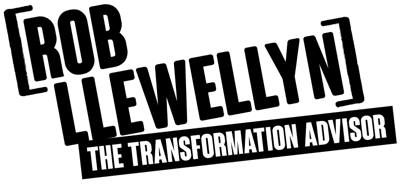Health professional digital capabilities frameworks
No industry is immune to the transformational impact of digital technologies, but only companies with sound strategies and a digital roadmap to harness the opportunities, will be among tomorrow’s leaders.
Listen to the audio version of this post, or read the transcript below.
There is a stark difference between people thinking they have a digital enterprise and digital enterprise thinking. Possessing digital technology is only a fraction of being a digital enterprise, and thinking otherwise is akin to avoiding the challenge of becoming a true digital enterprise that generates new value and revenue from digital resources, which involves going beyond simply digitalising existing ways of working.
Digital devices and apps lull some leaders into a false sense of security by making them feel they are already riding the digital wave and keeping up with progress. They feel they are digital when they touch their tablet or smartphone for some company data, which is a little like someone feeling they’re well-travelled because they watch TV travel shows.
Digital enterprise transformation is a serious business transformation that deserves the right approach, commitment, capability and resources.
Before setting to create the digital enterprise, it’s wise to agree a process driven approach to achieving this. In the way that methodologies are adopted to manage projects, and standards such as ITIL are adopted for service management, the same should apply for digital transformation and the overarching business transformation. The alternative is a random, unproven and high-risk approach.
Like any well-respected methodology, a digital transformation methodology should be based on extensive academic and business research, with successful use cases to prove its worth.
Any one and any company can make up a methodology and claim its effectiveness, but unless it has the solid foundations like I’ve just explained, it’s best to steer clear and adopt a proven approach.
The Digital Capability Framework (DCF) is a strategic management toolset designed to help companies innovate and orchestrate digitally enabled business transformation. It helps companies analyse their current situation and identify new business cases, which are enabled by technology trends.
Addressing both the technical and people side of transformation, the DCF enables transformation leaders to obtain clarity about what maturity level their organisation has in terms of six digital capabilities, what maturity level they wish to achieve, and how they plan to do that. Digital use cases help them develop a clear picture of the processes to be optimised and the technologies that should be used; and a tailored plan to transform the organisation into a digital enterprise can then be established and implemented.
The DCF consists of four building blocks:
- Building Block 1: Digital Capabilities
- Building Block 2: Digital Capability Maturity Models
- Building Block 3: Digital Use Cases
- Building Block 4: Digital Transformation Roadmaps
Digital Capabilities are the key skills and capabilities a company requires to transform itself into a sustainable and successful business by considering digital technology as the enabling component.
Digital Capability Maturity Models are the structured assessments used to evaluate the Digital Maturity of an organisation.
Digital Use Cases provide ways of showing how to reach specific goals, which will enhance an organisation’s Digital Capability. They typically show how organisations in specific industries can gain competitive advantages through digital transformation.
A Digital Transformation Roadmap provides six steps to proceed to a Digital Enterprise Transformation.
The process of developing a Digital Transformation Roadmap lends itself well to a natural collaboration between IT and Business leaders. This results in IT leaders such as the CIO being seen to take a more business orientated approach by involving business stakeholders in a process driven approach from the very outset, thereby enhancing the IT-Business relationship.
I just want to rewind back to Building Block 1: Digital Capabilities, for a few minutes because it lives at the heart of the DCF and is fundamental to the success of an organisation’s ability to become a digital enterprise.
Building Block 1 consists of Digital Transformation Enablers and Digital Transformation Goals. Let’s take a few minutes to take a closer look at this.
These two types of capabilities encourage organisations to take a look in the mirror and ask themselves whether they have the capabilities required to undertake business transformation and whether they have defined the right business-orientated goals that will provide an attractive return investment.
The three digital transformation enablers are Innovation Capability, Transformation Capability and IT Excellence; and an extensive body of knowledge exists within each one of these.
Organisations that intend to achieve some of their strategic objectives through business transformation will struggle if they do not possess digital transformation enablers that are at adequate maturity levels.
The three digital transformation goals are Customer Centricity, The Effective Knowledge Worker and Operational Excellence.
It is important that organisations centre their digital transformation efforts around business goals, as opposed to the latest and greatest digital solutions. Only when the right business goals and business benefits have been established, should the technology be considered. A good analogy is that the horse needs to go before the cart, and not vice versa.
So Where Does The Digital Capability Framework Come From?
The Digital Capability Framework (DCF) is the result of extensive research and collaboration between the Business Transformation Academy (BTA), SAP Business Transformation Services and their academic and business partners. Companies such as Unilever, SAP, DHL and many others have used the Digital Capability Framework.
The DCF helps digital transformation leaders such as the CIO take a structured business orientated approach to transformation, which gives rise to closer collaboration between IT and the Business and increased stakeholder confidence.
To discover more about the Digital Capability Framework, read Digital Enterprise Transformation and download 10 Steps to Digitally Enabled Business Transformation.
